Celebrating the Life of Vivienne Westwood
In a flurry of tartan and Harris tweed, Dame Vivienne Westwood leaves a Semi-Centennial legacy forever morphing the DNA of fashion.
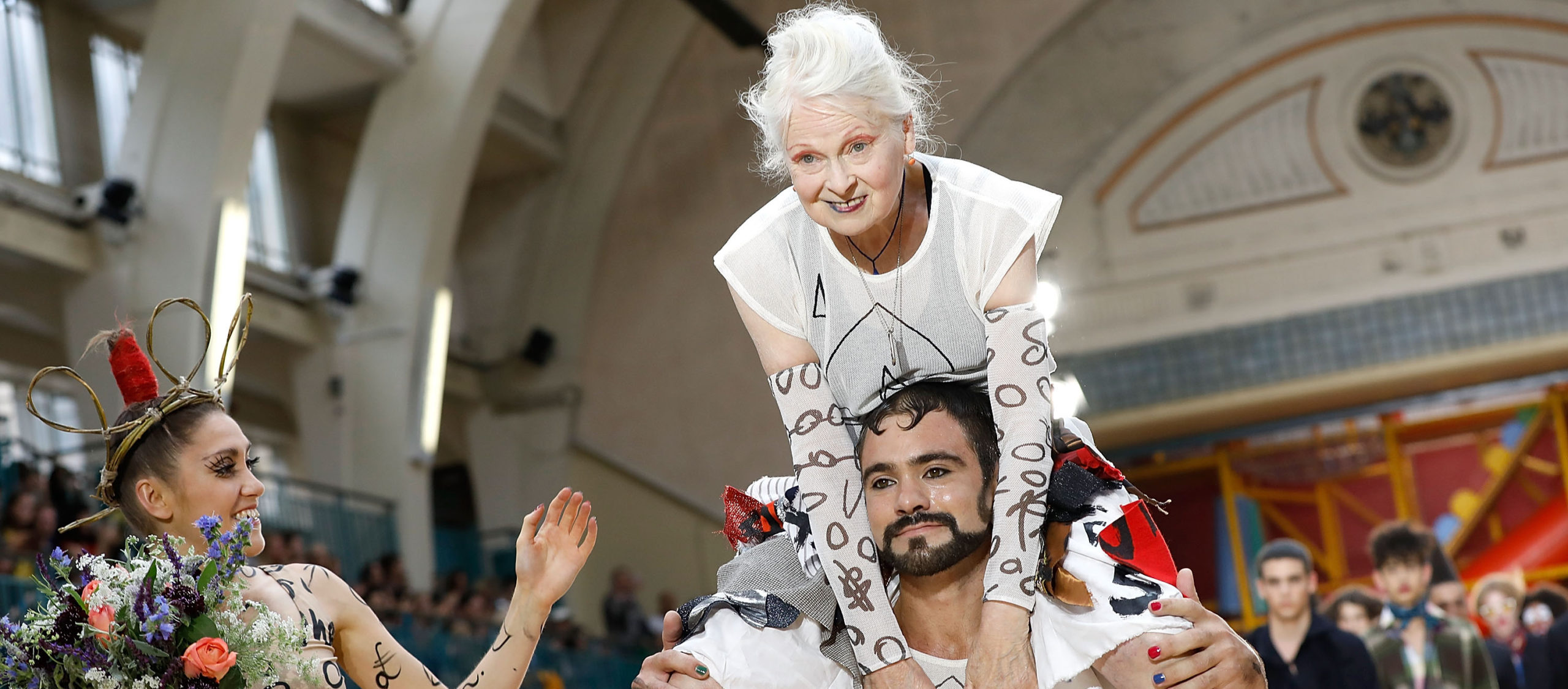
In a flurry of tartan and Harris tweed, Dame Vivienne Westwood leaves a Semi-Centennial legacy forever morphing the DNA of fashion. Eponymous for her sartorial subversion, activism, and stunning narratives in her work, Westwood passed away at the age of 81 on December 29th, 2022, surrounded by her loved ones in Clapham, South London.
A byword for ingenuity, Westwood‘s perpetual devotion to innovate propelled her to dismantle fashion’s structure and bring forth an extraordinary body of work unlike any other.
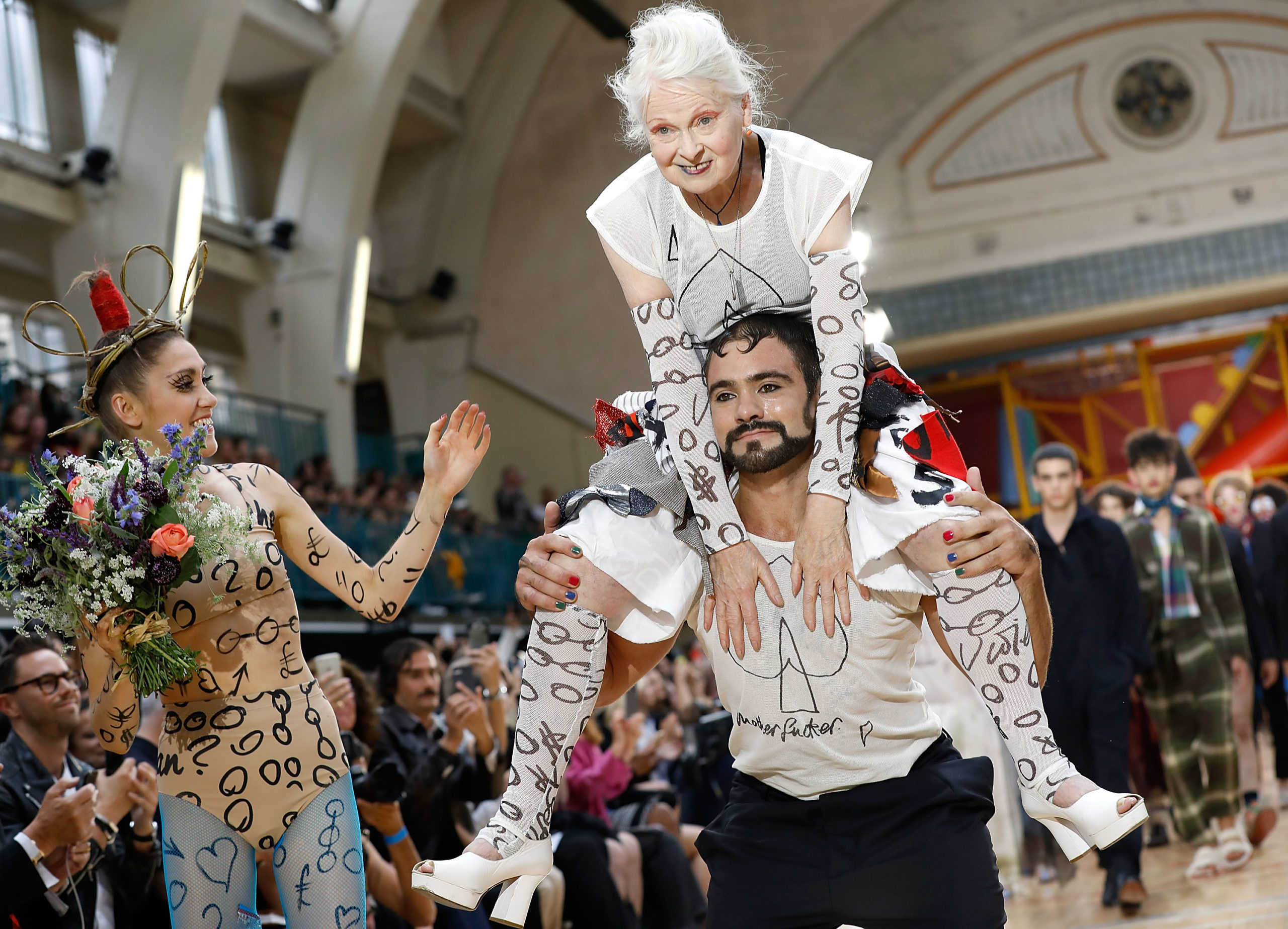
“GOD SAVE THE QUEEN”—SUBVERTING BRITISH IDEALS WITH PUNK
“The only reason I am in fashion is to destroy the word ‘conformity,’” Westwood stated about her work, “nothing is interesting to me unless it’s got that element.” These words would go on to encapsulate her overarching approach to her craft. Vivienne Westwood is widely known as the pioneer of punk fashion. Merging aesthetics of the teddy boy of the ’50s with bondage gear and royal iconography, she redefined British fashion with an eclectic punch shattering conventional ideals.
Her early work designing clothing for the boutique she and Malcolm McLaren ran collectively set the stage for her life’s passion. Dressing magnums of the punk movement propelled her to the forefront of the subculture, embracing music as a critical element of her work. Her design process was always meticulously intentional, as she often tried to envision where and by whom her creations would be worn. It became clear that her brand was more than a well-cultivated aesthetic; it was an extension of the identity of its wearers.
A vision that is equally intentional as it is intuitive is a rare spectacle in fashion. With a dexterous hand and a daring eye, Westwood’s garments embraced the inner misfit and channeled that energy into unforgettable ensembles. Her work was not only a mesmerizing sight but was also always evocative of costume design in the sense that it was performative. Its wearers were encouraged, dared even, to move and experience the marvel of wearing them whether in the team room or in the mosh pit.
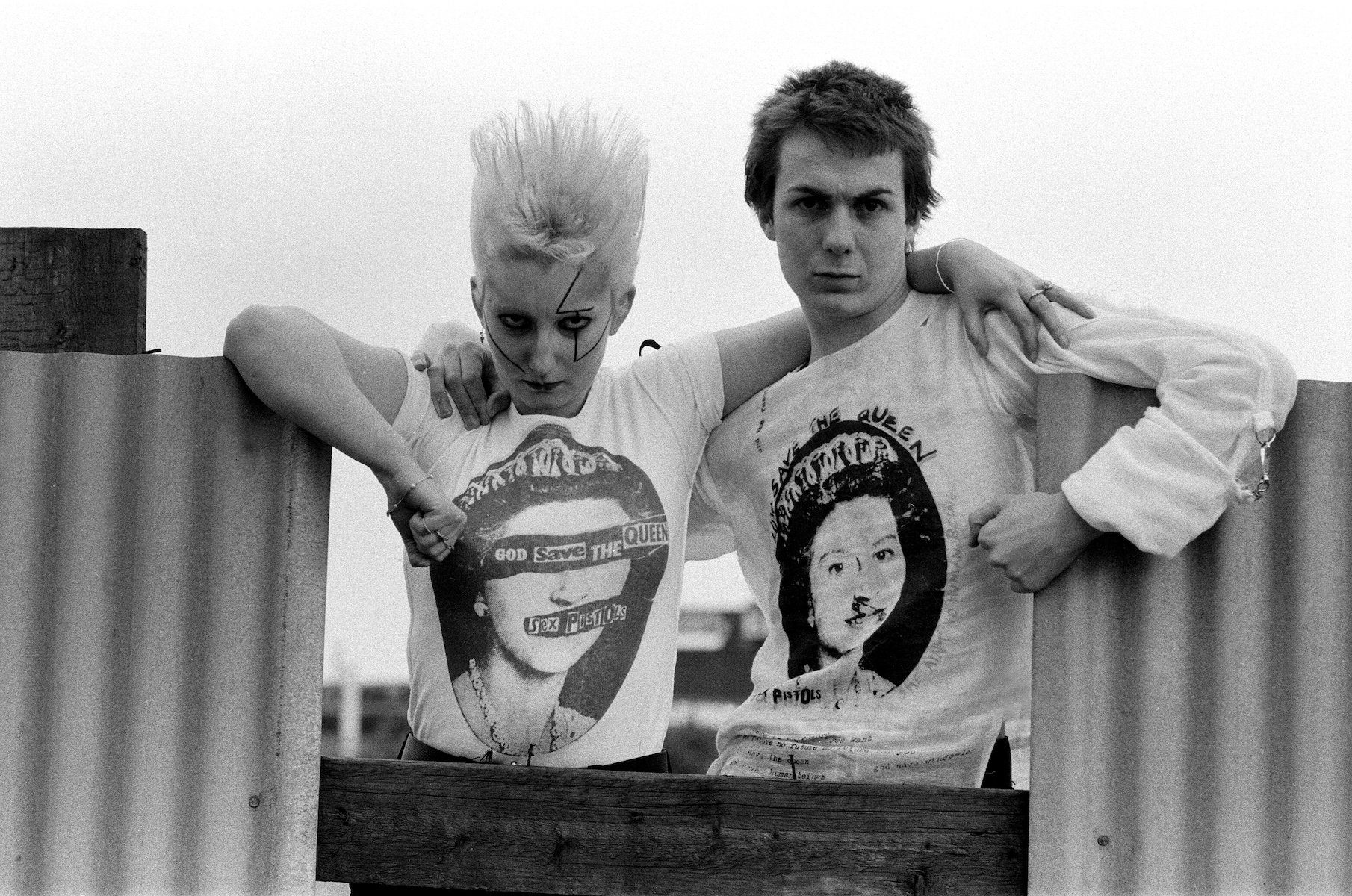
Often dubbed the mother of the Punk revolution, Westwood and McLaren birthed the notorious Sex Pistols from within the bondage-clad walls of their iconic boutique, SEX. They manifested everything Westwood’s brand stood for: anti-establishment, rebellion, a thoroughly curated image, and bold individuality.
A pillar of her repertoire was the iconic “God Save the Queen” T-shirt designed for them in 1977. Featuring a depiction of Queen Elizabeth II with enough controversy and defiance to be immortalized, it remains a historical relic. A distorted image of the Queen’s face pierced with a safety pin reads, “God Save the Queen…She ain’t no human being,” that stirred up British youth to the frenetic revolt idiosyncratic of the time.
Not only was her vision as a cultural disruptor and style visionary prefaced with her designs in this era, but also the boutique’s rapidly shifting names—including Let it Rock, SEX, Too Fast to Live, Too Young to Die, Seditionaries, and, World’s End—symbolized her love for perennially morphing narratives.
With each arc of the boutique adopting a different take on British counter-culture, it became clear her eclectic vision was only beginning to unfold as she prepared to present her debut collection, Pirate, under her eponymous brand.
Westwood’s approach defined itself as revolutionary in her ability to seamlessly blend intellectual influences into her work. Her mind was an almanac as she warped and wove historical references and iconography into designs that traced back to her brief stint as an art school student.
Drawing on the works of old master paintings, the relevance of tradition was reasserted in her craft. References to the works of Titian, Velasquez, Vermeer, Boucher, Watteau, and Fragonard were conducive to creating a duality in her work. Looking back to past masterpieces and looking forward to revolutionary garment construction with a disruptive edge, she spearheaded some of fashion’s most defining moments.
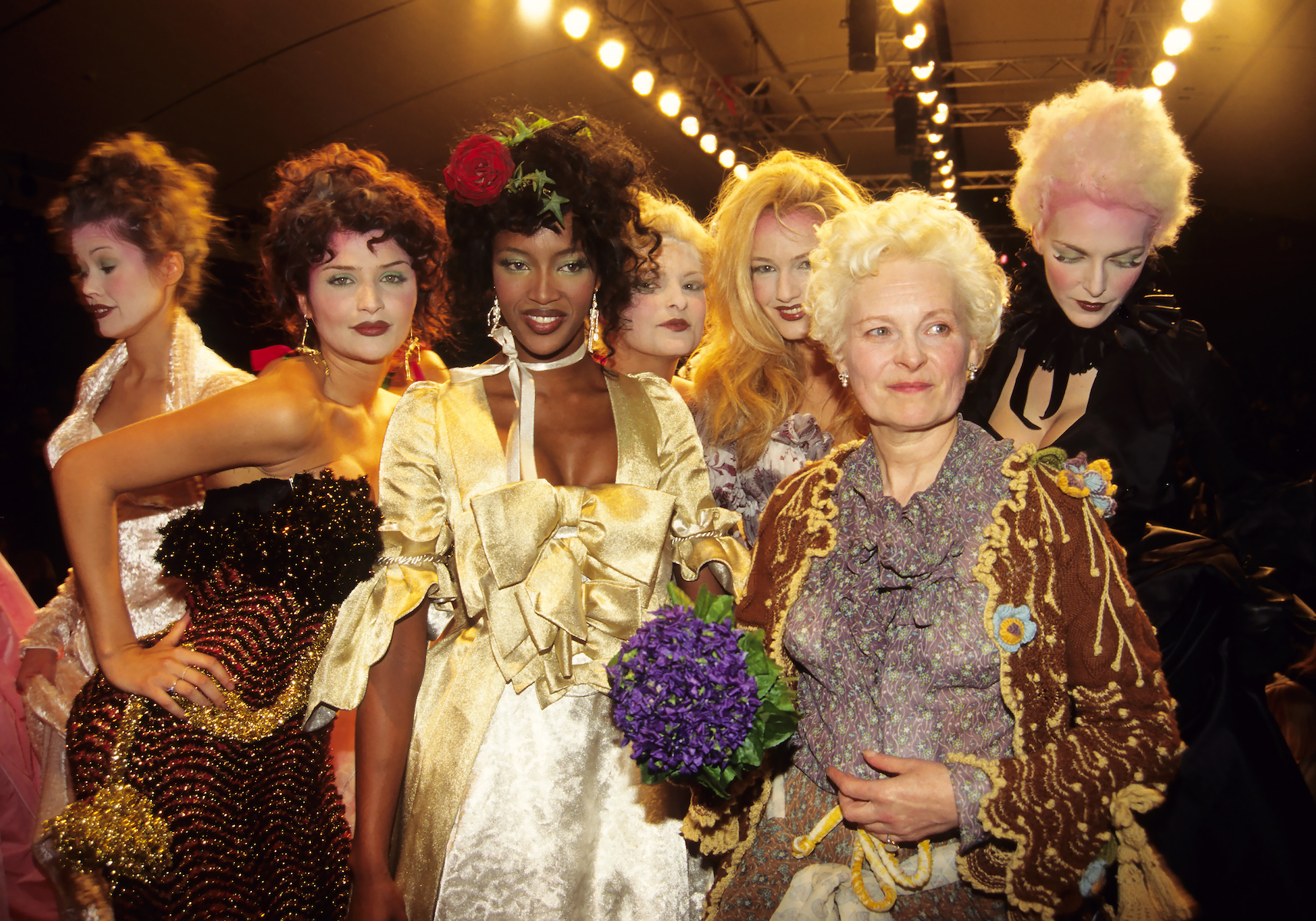
“The only place to find ideas is by looking at what people did in the past. It’s the way you can be original. You can’t be original by just wanting to do something. Nothing comes from a vacuum. It is impossible to be creative unless you have a link with the past and tradition. You cannot merely have a desire to create something and attempt to do it without learning from the techniques of the past,” reflected the vestiary visionary on her work.
GLOBAL IMPACT: A MASTERFUL MARRIAGE OF MANGA AND FASHION
Westwood’s work not only redefined British culture through tongue-in-cheek statements, but her vision also extended east at the height of Japanese punk and Harajuku culture. At the pinnacle of manga and the Y2K bloom of Japanese subcultures, Westwood’s designs found themselves coveted on the lips of every punk, lolita, and visual kei sporting fashion connoisseur on Harajuku street.
Introducing the glamour of high fashion into the wardrobe of manga characters that typically inject supercharged fantasy into its aesthetics revealed fashion’s ability to transcend our immediate world into a media of aspiration through an illustrated narrative.
Ai Yazawa’s narrative adoration of Westwood’s work through her sensational manga, Nana, launched the British powerhouse’s designs further into Japanese stardom. Weaving fashion into a story of heartbreak, coming of age, and friendship, Ai Yazawa helped spread her love for Westwood’s mesmerizing world of lavish punk and romantic designs.
The late fashion designer’s creations were not merely mentioned once or twice in the series. On the contrary, they dominated the visual elements of Nana from the very first volume, where both protagonists meet and commence their endearing friendship.
Throughout the series, its readers are heavily submerged in Vivienne Westwood’s iconography, including her eponymous pearl orb choker, orb lighter necklace, heart lapel jacket, tartan, animal print, and rocking horse ballerina shoes, amongst many others. These visual references further asserted Vivienne Westwood as one of the most successful and influential brands in Japan, with a fervor for her designs that lasts to this day.
Prior to Yazawa’s work, fashion and manga remained two separate domains, with specific designers rarely mentioned, if ever. Following its sensational debut, Vivienne Westwood’s advertisements catered to Japan took form in short manga narratives and style guides in fashion magazines based on the series’ characters.
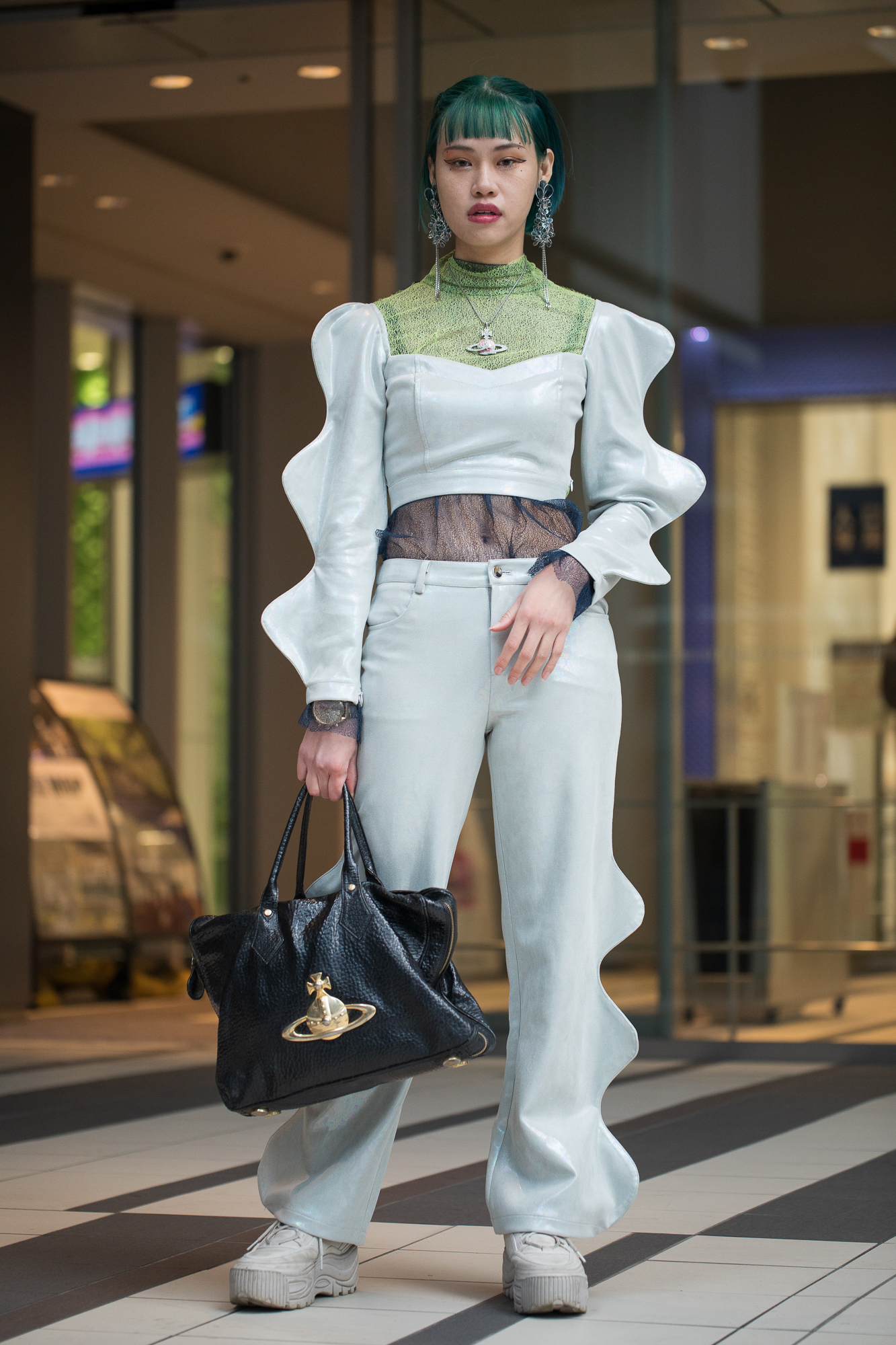
Her distinct brand is cherished by Japanese fashion savants across a diverse spectrum of aesthetics. As a symbol of anti-establishment values, her pieces can be spotted by the classic Japanese punk sporting bondage wear and ensembles clad in heavy metals. They can even be seen on the demure and more traditional fashion enthusiasts sporting the brand as a contrasting element to an outfit’s minimalistic and overtly feminine components honoring values of collectivism and modesty.
INSPIRING FUTURE GENERATIONS THROUGH CRAFT & ADVOCACY
Using her renowned brand as a vehicle for change, the British fashion icon led by example with her relentless dedication to environmentalism before sustainability even became the hot topic it is today. Westwood’s voice for activism echoed through her collections on the runway.
Through her ideation and production processes, she addressed the overconsumption characteristic of the fashion industry. Emphasizing quality over quantity, Westwood’s brand took a dive against the wave by advocating for a shift in the industry’s approach to fashion. Namely, her 2018 collaboration with Burberry was dedicated to Cool Earth, an initiative committed to persevering the rainforest and halting climate change in all three global tropical biomes.
Her involvement with the Ethical Fashion Initiative, which supports thousands of marginalized women from African communities through the UN group, the International Trade Centre, enabled her to impact bag production through inspiring ethical practices and inventive sustainable solutions. Precisely, collections employed recycled materials from landfills and underdeveloped areas.

Vivienne Westwood’s unbridled authenticity and assiduous stance on pressing issues ensured she made a statement with every action. Receiving accolades from even the most unsuspecting figures of authority, she preserved her unapologetic edge and anti-establishment roots. Perhaps the most archetypical of this is the purposeful omission of her underwear for her outfit when receiving the Order of the British Empire from Queen Elizabeth II in 1992.
Undoubtedly, her boldness and authenticity made her unforgettable. Propelling even Queen Elizabeth II to decide to establish Westwood as a dame.
The impact she left behind can be observed everywhere in today’s world, whether in the outfits illustrated for manga characters, sustainability’s newfound emphasis in fashion, or in the collections of designers today.
Stemming from humble roots, her legacy continues to pose a north star to designers globally, demonstrating the power of defining style outside of convention. Always orthogonal in her work, she emanated a fiery courage to shake up the system, question practices taken as absolutes, and initiate change.
Vivienne Westwood never belonged to our world; she belonged to the cosmos. Her vision was a mystic enigma gracing us as it swept through our world, making full use of every movement and word.
Discover More
